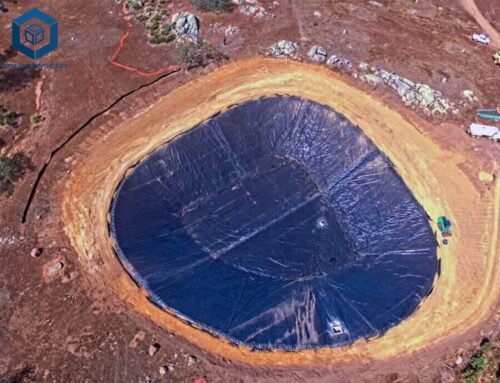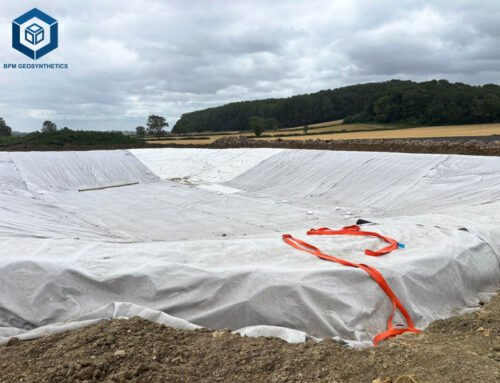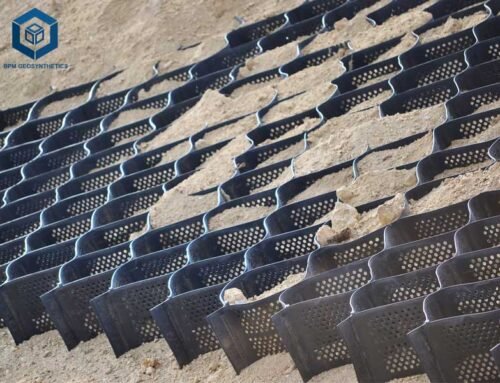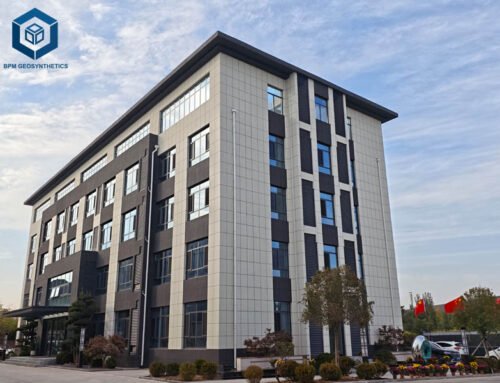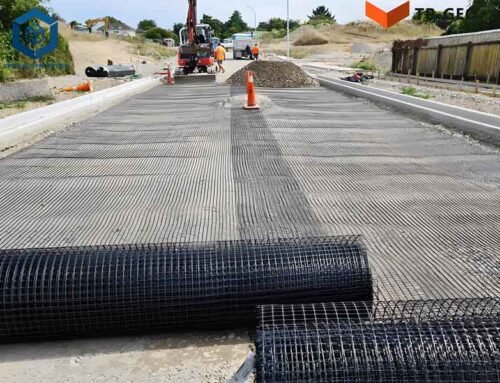Fish pond liners are critical components for creating and maintaining water bodies, such as backyard koi ponds, commercial fish farms, or decorative water gardens. These impermeable geomembranes prevent water seepage, protect aquatic ecosystems, and ensure long-term structural integrity. A common question among pond owners and builders is, “What is the price of a fish pond liner?” This comprehensive guide explores the factors influencing fish pond liner prices, material types, specifications, installation costs, regional pricing variations, and recent market trends. By providing data-driven insights, we aim to help you select the right liner for your fish pond while staying within budget.
1. Understanding Fish Pond Liners: Purpose and Applications
Fish pond liners are geosynthetic or rubber-based membranes designed to retain water in ponds, ensuring a safe and stable environment for fish and aquatic plants. Unlike general pond liners, fish pond liners must be non-toxic, UV-resistant, and durable to withstand environmental stressors while supporting aquatic life. Common materials include high-density polyethylene (HDPE), ethylene propylene diene monomer (EPDM), reinforced polyethylene (RPE), and polyvinyl chloride (PVC), each with distinct properties suited to specific applications.
Key Applications of Fish Pond Liners
- Backyard Koi Ponds: Create safe habitats for ornamental fish like koi, requiring fish-safe, flexible liners.
- Commercial Fish Farms: Support large-scale aquaculture with durable, chemical-resistant materials.
- Water Gardens: Enhance aesthetic appeal with liners that adapt to irregular shapes.
- Irrigation Reservoirs: Store water for agricultural use, requiring robust liners for large areas.
- Ecological Ponds: Maintain natural ecosystems with non-toxic, long-lasting liners.
Benefits of Fish Pond Liners
- Water Retention: Prevents seepage, maintaining consistent water levels for fish health.
- Fish Safety: Non-toxic materials ensure a safe environment for aquatic life.
- Durability: Resists UV degradation, punctures, and chemical exposure, with lifespans of 10–40 years.
- Flexibility: Conforms to various pond shapes and sizes, reducing installation complexity.
- Cost-Effectiveness: Reduces maintenance and replacement costs compared to natural liners like clay.
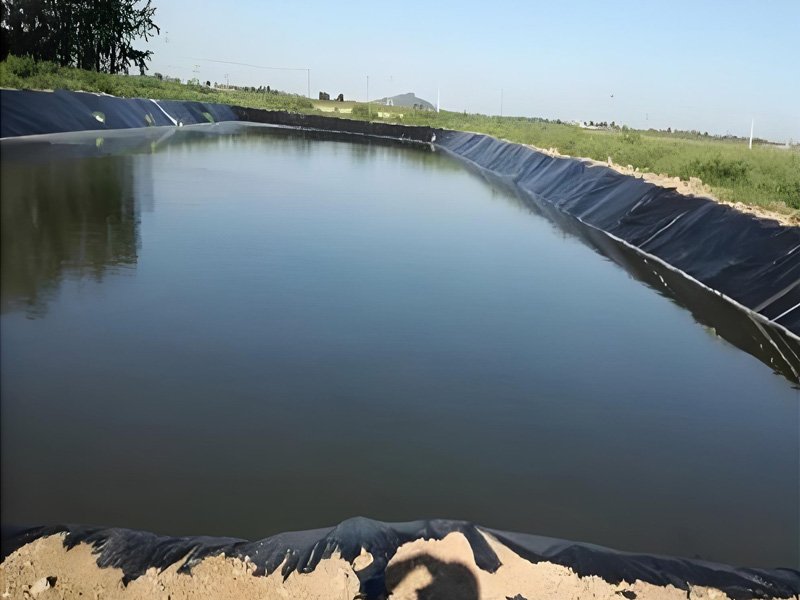

2. Factors Influencing Fish Pond Liner Prices
The cost of fish pond liners varies based on material, thickness, size, installation complexity, and regional market dynamics. Below, we analyze these factors with precise data to provide clarity.
2.1 Material Type
The choice of material significantly impacts price and suitability for fish ponds:
- High-Density Polyethylene (HDPE) liner: Known for high tensile strength (640 N per ASTM D6693) and chemical resistance, HDPE liners cost $0.20–$0.62 per square foot. They are ideal for large fish farms due to their durability (20–40 years lifespan) and puncture resistance (150 lbs/inch).
- Ethylene Propylene Diene Monomer (EPDM): A fish-safe rubber liner costing $0.50–$2.00 per square foot, EPDM is highly flexible (300% stretchability) and UV-resistant, perfect for koi ponds. Lifespan: 20–30 years.
- Reinforced Polyethylene (RPE): Stronger and lighter than HDPE, RPE liners cost $0.40–$0.90 per square foot. They are 2–3 times more puncture-resistant and suitable for large ponds. Lifespan: 20–40 years.
- Polyvinyl Chloride (PVC): A budget-friendly option at $0.10–$0.65 per square foot, PVC is less durable (5–15 years) and not always fish-safe, limiting its use to decorative ponds.
- Linear Low-Density Polyethylene (LLDPE): Offers flexibility and moderate durability, costing $0.30–$0.60 per square foot. Suitable for medium-sized fish ponds. Lifespan: 10–20 years.
- Bentonite Clay (GCL): A natural, eco-friendly option costing $0.50–$3.00 per square foot, requiring 2–5 lbs per square foot. It’s fish-safe but needs professional installation. Lifespan: 20–30 years.
2.2 Thickness and Durability
Fish pond liners typically range from 0.3 mm (12 mil) to 1.5 mm (60 mil). A 0.5 mm (20 mil) liner is standard for small to medium fish ponds, balancing cost and durability:
- 5 mm (20 mil): Costs $0.20–$0.62 per square foot (HDPE), suitable for ponds 2–6 ft deep with smooth surfaces.
- 75 mm (30 mil): Costs $0.40–$0.90 per square foot, ideal for larger ponds or rocky terrain.
- 0–1.5 mm (40–60 mil): Costs $0.80–$1.20 per square foot, used for high-pressure applications like commercial fish farms.
Thicker liners increase costs by 10–20% but extend lifespan by 20–30%, reducing long-term expenses. For example, a 0.5 mm HDPE liner costs $0.03 per square foot annually over 20 years, while a 1.0 mm liner costs $0.02 over 40 years.
2.3 Size and Surface Area
The pond’s size directly affects material costs. To calculate the required liner size:
- Formula: Liner Length = Pond Length + (2 × Depth) + 2 ft (overlap). Liner Width = Pond Width + (2 × Depth) + 2 ft (overlap).
- Example: A 10 ft x 8 ft pond with a 4 ft depth requires a 18 ft x 16 ft liner (288 square feet). At $0.50 per square foot (HDPE), the material cost is $144. For a 1-acre pond (43,560 square feet), costs range from $8,712–$27,000.
Bulk purchases (>10,000 square feet) reduce costs by 20–30%, dropping HDPE prices to $0.43 per square foot.
2.4 Installation Complexity
Professional installation costs $0.20–$1.50 per square foot, depending on:
- Site Preparation: Clearing rocks and roots adds $0.10–$0.30 per square foot.
- Geotextile Underlay: Protects liners from punctures, costing $0.25–$0.40 per square foot.
- Welding: Large ponds require field seaming, adding $0.05–$0.15 per square foot.
- Geographical Location: Remote areas increase labor and shipping costs by 15–25%.
2.5 UV and Chemical Resistance
Fish-safe liners require UV stabilization to prevent degradation. UV-treated HDPE liners cost $0.55 per square foot vs. $0.50 for non-treated. Chemical-resistant liners (e.g., for aquaculture with high ammonia levels) add $0.05–$0.10 per square foot.
2.6 Brand and Supplier
Reputable brands like BPM Geosynthetics, Firestone, and Western Environmental Liner charge $0.50–$2.00 per square foot due to quality certifications (e.g., NSF-61 for drinking water safety) and warranties (up to 20 years). Lesser-known suppliers offer liners at $0.10–$0.40 per square foot but may lack fish-safe certifications.
3. Fish Pond Liner Prices: Regional Insights
Prices in Kenya
In Kenya, fish farming is a growing industry, driving demand for affordable, fish-safe liners. Prices include:
- 5 mm HDPE Liners: KSh 230–300 per square meter ($0.18–$0.23 per square foot).
- Installation Costs: KSh 100–150 per square meter ($0.08–$0.12 per square foot).
- For a 200-square-meter pond (2,153 square feet), material costs are KSh 46,000–60,000 ($350–$460), with installation adding KSh 20,000–30,000 ($150–$230).
Global Price Ranges
- United States: $0.20–$2.00 per square foot for 0.5–0.75 mm liners, with installation at $0.20–$1.50 per square foot. Bulk orders reduce costs by 15–20%.
- India: ₹70–150 per square meter ($0.08–$0.18 per square foot), benefiting from low manufacturing costs.
- China: $0.15–$0.70 per square foot, driven by efficient supply chains and lower labor costs ($2–$5/hour vs. $15–$25/hour in the U.S.).
- Australia: $0.50–$2.00 per square foot, higher due to custom sizes and remote installations.
4. Specifications and Parameters for Fish Pond Liners
Selecting the right fish pond liner requires evaluating project-specific needs. Below are key specifications:
4.1 Material Properties
- HDPE: Tensile strength of 640 N, puncture resistance of 150 lbs/inch, and carbon black content ≥2% for UV resistance. Fish-safe and ideal for large ponds.
- EPDM: 300% stretchability, fish-safe, and UV-resistant (–40°F to 175°F). Perfect for koi ponds with complex shapes.
- RPE: 2–3 times more puncture-resistant than HDPE, lightweight, and fish-safe. Suitable for large fish farms.
- PVC: Flexible but potentially toxic to fish unless certified fish-safe. Lifespan: 5–15 years.
- LLDPE: Balances flexibility and strength, fish-safe, with a lifespan of 10–20 years.
- Bentonite Clay: Natural, fish-safe, with high puncture resistance but requires professional installation.
4.2 Thickness Suitability
- 5 mm (20 mil): Suitable for small to medium ponds (2–6 ft deep) with smooth surfaces.
- 75 mm (30 mil): Ideal for larger ponds or rocky terrain, offering enhanced durability.
- 0–1.5 mm (40–60 mil): Used for commercial fish farms or high-pressure environments.
4.3 Fish Safety
Fish-safe liners (HDPE, EPDM, RPE, LLDPE) are free of toxic additives like algaecides or fungicides, unlike some roofing materials. Certifications like NSF-61 ensure safety for aquatic life.
4.4 Seaming and Testing
- Welding: HDPE and RPE require hot wedge welding (0.15–0.2 MPa pressure) for leak-proof seams.
- Testing: Vacuum testing (0.005 MPa for 30 seconds) ensures seam integrity.
4.5 Geotextile Underlay
A non-woven geotextile underlay ($0.25–$0.40 per square foot) protects liners from punctures, extending lifespan by 20–30%.
5. Installation Process and Costs
Proper installation is crucial for fish pond liner performance. Below is a step-by-step guide:
5.1 Site Preparation
- Clearing: Remove rocks, roots, and debris to prevent punctures. Cost: $0.10–$0.30 per square foot.
- Excavation: Dig to the desired depth (4–8 ft for koi ponds), ensuring gentle slopes (2:1 or 3:1). Cost: $60–$200 per cubic yard.
- Geotextile Underlay: Lay a protective layer to cushion the liner. Cost: $0.25–$0.40 per square foot.
5.2 Liner Placement
- Unrolling: Carefully unroll the liner to avoid creasing or stretching.
- Fitting: Adjust the liner to conform to the pond’s contours, leaving 1–2 ft of overlap for anchoring.
5.3 Seaming and Testing
- Welding: Use hot wedge machines for HDPE/RPE or adhesive for EPDM to create leak-proof seams. Cost: $0.05–$0.15 per square foot.
- Testing: Fill the pond gradually and test for leaks over 1–2 days.
5.4 Securing and Finishing
- Anchoring: Tuck liner edges into an anchor trench (1 ft deep, 1 ft wide) and cover with soil.
- Protection: Add edging (rocks, plants) to secure and hide the liner. Cost: $700–$1,750.
5.5 Installation Costs
- Kenya: KSh 100–150 per square meter ($0.08–$0.12 per square foot).
- United States: $0.20–$1.50 per square foot, higher for rocky terrain or remote locations.
- Australia: $0.50–$1.50 per square foot, including geotextile and labor.
For a 2,000-square-foot koi pond, installation costs range from $400–$3,000 in the U.S.

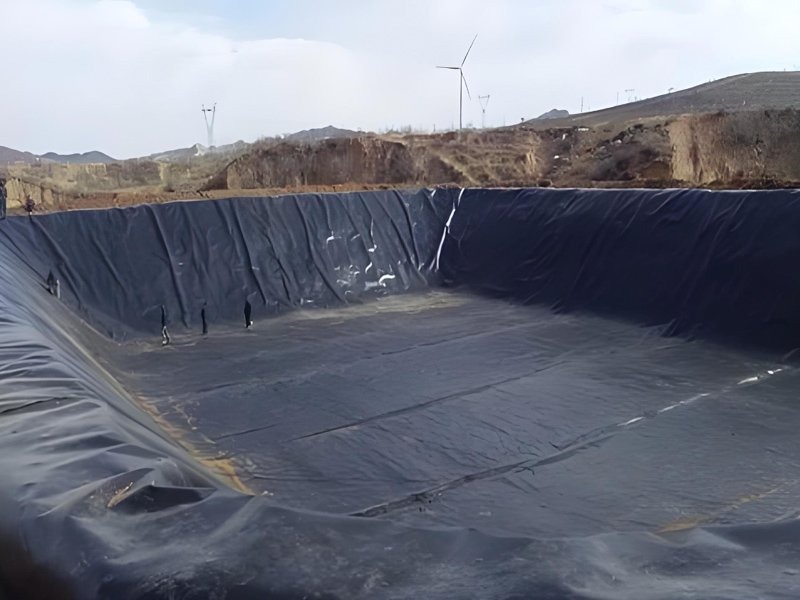
6. Recent Trends in the Fish Pond Liner Market
The fish pond liner market is evolving due to technological advancements and environmental demands. Key trends include:
- Sustainable Materials: Recycled HDPE and biodegradable liners are gaining traction, costing 5–10% more but aligning with eco-friendly goals. Over 60% of manufacturers are exploring sustainable options.
- Aquaculture Growth: Global fish farming, valued at $300 billion in 2024, drives demand for HDPE and EPDM liners, stabilizing prices in regions like Kenya and India.
- Custom Fabrication: Manufacturers offer liners up to 60,000 square feet in one piece, reducing seams and leaks by 15%. Custom sizes add 5–10% to costs.
- Smart Monitoring: IoT sensors for leak detection are emerging in commercial fish farms, adding 10–15% to costs but reducing maintenance by 20%.
- Supply Chain Challenges: Raw material shortages have increased prices by 5–8% since 2023, particularly for HDPE due to ethylene price fluctuations.
7. Cost-Saving Tips for Fish Pond Liner Projects
To optimize your budget:
- Compare Suppliers: Request quotes from BPM Geosynthetics, Firestone, or Western Environmental Liner for competitive pricing.
- Bulk Purchasing: Orders over 10,000 square feet reduce costs by 20–30%.
- DIY Installation: For small ponds (<500 square feet), DIY installation saves $0.20–$1.00 per square foot, but requires proper training.
- Choose Fish-Safe Materials: Avoid PVC unless certified fish-safe to prevent costly fish loss.
- Maintenance: Regular cleaning and inspections ($0.01–$0.05 per square foot annually) extend liner lifespan by 20–30%.
8. Conclusion
Fish pond liner prices range from $0.10–$2.00 per square foot globally and KSh 230–300 per square meter in Kenya, depending on material, thickness, size, and installation. HDPE and EPDM are top choices for fish safety and durability, while PVC offers a budget-friendly option for non-fish ponds. By understanding these factors and leveraging cost-saving strategies, you can select a high-quality, fish-safe liner that meets your project needs and budget. Please contact trusted suppliers like BPM Geosynthetics for personalized quotes and expert guidance.

